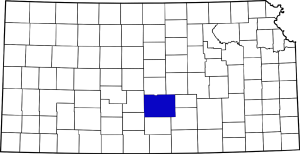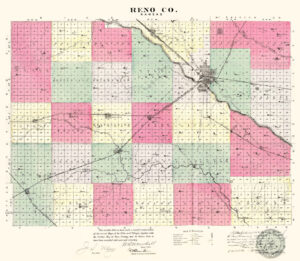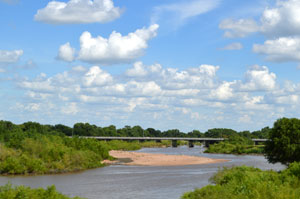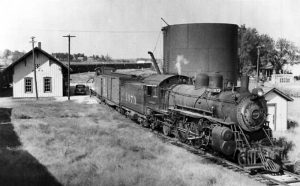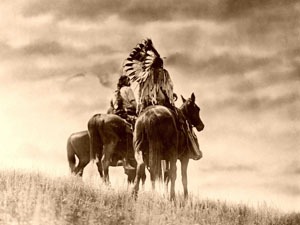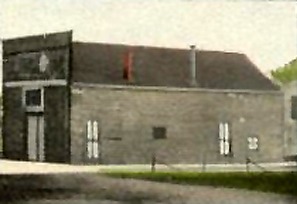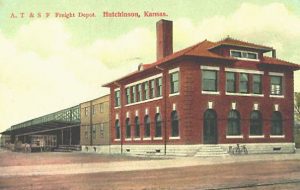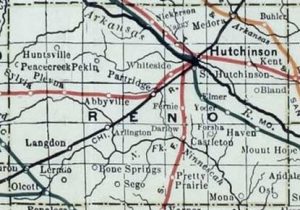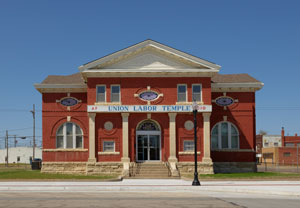Towns & Places
Abbyville
Arlington
Buhler
Haven
Hutchinson – County Seat
Langdon
Nickerson
Partridge
Pleasantview – Unincorporated
Plevna
Pretty Prairie
Sylvia
Turon
Willowbrook
Yoder
Quivira National Wildlife Refuge
Sandhills State Park
Reno County, Kansas, is located on both sides of the Arkansas River in the south-central part of the State.
Reno County was organized in 1868, formerly a part of Marion County, by the Kansas Legislature in 1868, and it was named in honor of Major-General Jesse Lee Reno, who fought in the Civil War and died in the line of duty at the Battle of South Mountain in Maryland in 1862. However, it was not settled until three years later.
The county’s surface is undulating prairie, in some places nearly level. However, abundant drainage exists, including the Arkansas River, the Little Arkansas River, the north fork of the Ninnescah, Cow Creek, and their tributaries. These streams, with numerous smaller tributaries, are ever-flowing over gravelly bottoms. Numerous springs are found in all portions of the county, especially in the sandhills, where good water is always abundant. The valley of the Arkansas River has an average width of five miles, in some places spreading out to ten miles.
The first settlers were not at that time within the confines of Reno County, as the boundary lines were subsequently changed in 1872 when Range 4 on the East and a tier of townships from Rice County on the north were added, while a large tract on the south was detached and given to the new county of Kingman.
Lewis M. Thomas, the first settler, located a claim in Little River Township in November 1870. The following month, he went to Lawrence, Kansas, to purchase provisions and, on his return, was accompanied by John Hunt, who moved to the Little Arkansas River Valley. At about the same time, J.H.D. Rosan came to the county, and early the following year, he located a ranch. He and his brother, Charles W. Rosan, and a man named Charles Street drove in a large herd of Texas cattle. They procured a surveyor from Salina and had their lands surveyed — the first in either Rice or Reno Counties. George W. Watson was located in the valley of Cow Creek in March 1871. Others followed in the next year, primarily settling in the northern and eastern parts of the county along the rivers. The early settlement included several Amish and Mennonites, still represented in the county.
The first crops were planted in the spring of 1871. The buffalo, still plentiful, took most of the sod corn. This year, W. H. Caldwell built the first traveler’s inn near the mouth of Cow Creek. The first post office in the county was established there, and the place was called Queen Valley. The Atchison, Topeka & Santa Fe Railroad was expected to strike the Arkansas River at that point. The first business establishment in the county was also at Queen Valley. The Hutchinson News was established in 1871 and is still published today.
This was one county where there was no real damage suffered from the Indians, except on a few occasions when they drove away livestock. Reno was not exempt from Indian scares, the worst one happening in early April 1871 on the occasion of a threatened attack by the Cheyenne. At that time, a large hunting party of Kanza Indians pitched their tents on the north side of the Arkansas River near the present city of Hutchinson, and another party of Sac and Fox on the south side. As these Indians were friendly, the settlers had no apprehensions of danger.
Nothing occurred to relieve the monotony of everyday life until July, when a commotion was observed in both camps one day. When the settlers looked into it, they found that a large party of Cheyenne was in the immediate vicinity and threatened an attack on the other Indians. Word spread quickly, and because the Cheyenne were known to be among the most ferocious tribes, the white settlers were alarmed at the probable critical situation. Some of them, throwing their movables into wagons, hastily fled to Sedgwick City and other places of refuge. A greater number remained to defend their homes. Among those who fled was a small party from Wisconsin, which had selected land along Cow Creek but still lived in their wagons. They hurriedly departed for the East at the first alarm and, terrified, did not return. The Cheyenne did not make the excepted attack, except for one party, which dashed into the grazing grounds near Rosan’s Ranch and drove off several cattle. The cattleman then organized a party of 35-40 men, pursued the Indians, overtook them 50 miles southwest, and recovered their stock. This ended the first great Indian scare.
The first political convention was held in 1872 when the county was called home to about 600 people. A provisional organization was formed on the first day of the year, and A. C. Kies was chosen as the temporary county clerk, and special commissioners were appointed. A special election was held on January 6, and C. C. Hutchinson (founder of the town of that name) was elected to the legislature. On February 3, a county seat election was held, and the vote was almost unanimous for Hutchinson. On March 12, an election of officers was held without about 150 votes cast. The first school district was also organized early this year, including Hutchinson and the area vicinity.
No subdivision of the county into municipal townships had been made. In April, an election was held in which township officers who should have jurisdiction over the whole county under the name of Reno Township were elected. The first bond election was held in April when three propositions were submitted and carried, the first for $15,000 to build a courthouse, the second for $35,000 to bridge the Arkansas River, Cow Creek, and the Little River; and $10,000 for current expenses pending the collection of taxes.
The first organized church was the Hutchinson Methodist, established in 1872. The first church building was the Hutchinson Presbyterian, constructed in 1873. Hutchinson, the home of the official State Fair, established a county fair in about 1873.
The first railroad built through the county was the Atchison, Topeka & Santa Fe, which extended its mainline west from Newton in 1872, striking the Arkansas River at Hutchinson and following the course of the river northwest, leaving Reno County about mid-way on the north line. In June 1872, a bridge was constructed across the Arkansas River at Hutchinson, which opened the lands beyond to settlement. During the remaining months of 1872 and 1873, that part of the county was settled very rapidly.
The contract for building the courthouse was given to W. E. Hutchinson on July 27, 1872. Work was begun on the building and continued until the fall of the same year, when, owing to a change in the original plans, including an iron jail in the basement, it was claimed that the amount voted was insufficient to complete the building. A second bond election was ordered, held on December 21, when additional funds were voted on and agreed to. When the courthouse was completed, it was a large two-story brick and stone building measuring 40×60 feet.
The first term of the district court was held in August 1872 in a temporary courthouse. The first regular election was held in the fall, and a non-partisan ticket was elected.
The sandhills in the northeastern part of the county were covered with a heavy growth of timber, which was rare in that part of Kansas. The trees were cottonwood; some were six feet in diameter, with their lowest limbs 50 feet from the ground. The belt was four miles wide and a great boon to the early settlers, who used it so rapidly that the supply was nearly exhausted by 1873.
The first threshing machine was brought into the county in 1873 by John N. Shahan. The first division of the county into townships took place on April 12, 1873. On November 18, 1873, bonds of $10,000 were voted to establish an asylum for the county poor. However, owing to the grasshopper visitation in 1874, it was deemed advisable to use the amount mentioned above to aid those who had lost everything from the ravages of insects.
The early Reno County homesteaders had few options for jobs at this time. The wholesale slaughter of approximately four million bison near extinction caused many to collect the bones by the wagon load for money to keep from starving. These bones were used by Eastern manufacturers for fertilizer and shirt buttons and piled at today’s topic location.
Salt was discovered by Ben Blanchard in South Hutchinson when he was trying to find oil in September of 1887. Though Blanchard was disappointed in not finding oil, others capitalized on the find. In the early years, several men took the salt from the ground by pumping water downpipes, forcing the water back up, and carrying the salt with it.
By 1901, the Reno County government had outgrown its courthouse, and a new, much larger one was built. It opened in 1902.
By 1910, the county was called home to 37,853 people and was the outlet of the great wheat and corn growing district, handling most of the grain grown in the surrounding counties and those in the southwest as far as the state line. Other farm products included hay, oats, dairy products, poultry and eggs, and livestock, the value of which ran from $6,500,000 to $8,500,000 annually.
Reno was a favored county for continued settlement and business expansion when this wealth was added to the immense income from salt and the commerce that passed through the area.
By this time, all the railroads operating in the county centered at Hutchinson, except a branch of the St. Louis and San Francisco Railroad northwest from Wichita, which crossed the northeast corner, and a line of the Missouri Pacific crossed the southwest corner into Stafford County. Besides the main line of the Atchison, Topeka & Santa Fe, there are two other lines of the same system, a “cut-off,” which diverged west at Hutchinson and met the mainline at Kinsley and another south from Hutchinson through Kingman and Harper Counties. The Chicago, Rock Island & Pacific entered in the northeast and crossed southwest through Hutchinson into Pratt County. A line of the Missouri Pacific Railroad entered in the southeast and crossed northwest along the Arkansas River into Rice County. There were nearly 200 miles of railroad in the county.
These railroads were instrumental in developing not only Reno County but all of Kansas. The railroads played a significant role in developing some of the smaller towns within the county. The arrival of the Santa Fe Railroad established Hutchinson, Partridge, Abbyville, Plevna, and Sylvia. The Rock Island and Frisco Railroads established some other small cities in the County.
The post offices in the county in 1910 were Abbyville, Arlington, Bernal, Buhler, Castleton, Darlow, Haven, Hutchinson, Langdon, Medora, Nickerson, Ost, Partridge, Plevna, Pretty Prairie, Sylvia, Turon, and Yoder.
Growths of natural timber, mostly cottonwood, and box elder, flourished along the streams, and artificial plantings dotted the county in every direction. Limestone was found in the northeast and southwest, red sandstone in the northeast and on the forks of the Ninnescah River. The salt that placed Kansas third in producing this commodity was mainly taken from the great beds underlying Reno County. The industry developed on a large scale, and the source is seemingly inexhaustible, providing for one of the largest salt plants in the world in operation in Hutchison.
In 1923, Emerson Carey started the Carey Salt Company and dug the first mine in Reno County. Afterward, more salt companies began business in the county, positively impacting the economy.
On February 27, 1925, Reno County government staff noticed cracks in the courthouse. Over the next week, the cracks expanded, and by March 2, the cracks had become bad enough that court proceedings were halted, and everyone was sent home. Nearly 25 years old by that time, the courthouse was again too cramped for the growing county offices. The building was razed in 1929.
In 1929, the building of a new Reno County Courthouse began and was completed in 1930 at $386,500. Furnishings were added to occupy the premises at $126,600, costing approximately $513,000. The six-story art deco design building was constructed of buff-colored brick and Bedford limestone and initially measured 152 feet wide and 144 feet deep. In 1971, the Law Enforcement Center was added.
Reno County measures 1,256 square miles and is the third-largest county in Kansas, behind Butler and Finney Counties. Its population today is over 62,000. County industries include agriculture — wheat, corn, milo, and soybeans, among other crops; salt mining, hydraulics manufacturing; agricultural implement manufacturing; fire engines, ambulances, and limousines; grocery storage; and trucking. Hutchinson is the county seat and the largest city in the county.
Interesting sites in the county include the Sugar Mill, the Great American Life Building, the Reno County Courthouse, and the Andrew Carnegie Library in Hutchison. The old Ranson Hotel is in Medora, a large old school in Sylvia, and the 1913 general store in Plevna.
By Kathy Alexander/Legends of Kansas, updated October 2023.
Also See:
Sources:
Blackmar, Frank W.; Kansas: A Cyclopedia of State History, Vol I; Standard Publishing Company, Chicago, IL 1912.
Cutler, William G; History of Kansas; A. T. Andreas, Chicago, IL, 1883
Forter, Emma; History of Marshall County, Kansas: Its People, Industries, and Institutions, F. Bowen, 1917
Kansapedia
Ploughe, Sheridan; History of Reno County, Kansas: Its People, Industries, and Institutions; Bowen and Company, 1917
Reno County, Kansas


